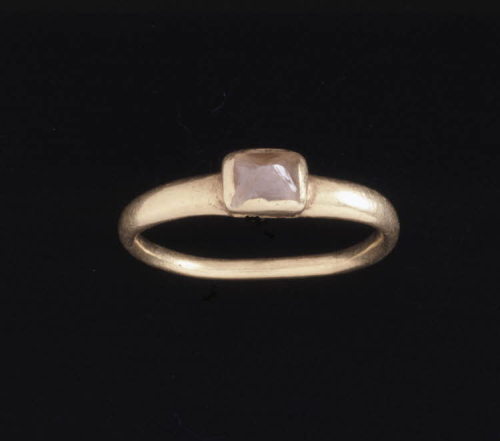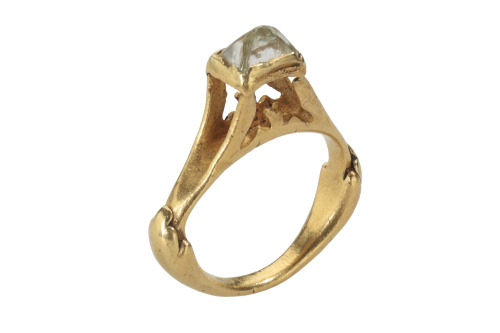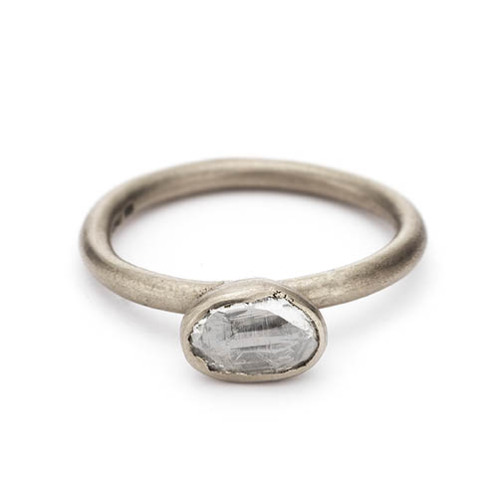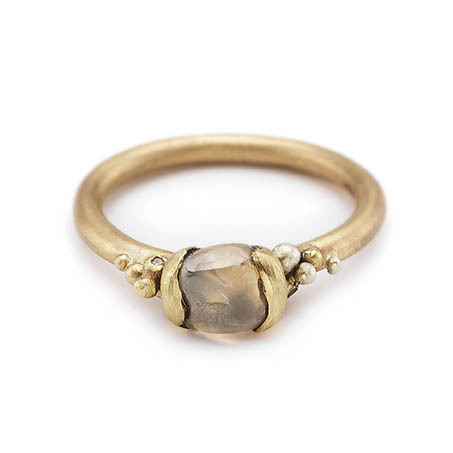Diamonds: April Birthstone
Follow






It’s April and the lucky ladies celebrating birthdays this month get diamond as their birthstone! So in honour of this, we thought a brief history of diamonds in Ancient jewellery, particularly in their raw state (one of Ruth’s favourite ‘cuts’ used extensively in the Lustre Collection), would be appropriate.
When diamonds became a part of our lives is unclear but where they were originally discovered is certain: India, mined from alluvial deposits along their rivers. An old Indian work, named the Arthasastra, (dating back to the 4th century BC) gives us the first proper insight to when diamonds were first used. By then diamonds were known, traded and even taxed in India and the existence of diamond experts is mentioned together with a classification system of the stones. This implies a rather thorough knowledge of the subject, leading one to the belief that diamonds were in use for quite some time by then.
Diamonds were also known and worn by the Romans. They were highly prized as ring stones and a few rings containing uncut diamonds have survived and are now in the collection of The British Museum. The Romans believed diamonds to protect their owner from all kinds of evil, and for a long time it was believed that this divine crystal would loose its powers in any other state than its natural one. Cutting diamonds was as much a taboo as it was difficult in the Ancient times.
After the decline of the Roman empire diamonds disappeared from European jewellery altogether. India was the only known source of diamonds until the 18th century and the supply chain to Western Europe got disturbed by the disappearance of the Roman merchants. The new religion of Christianity subdued the popularity of the gem and condemned the superstitious attributes which had accompanied diamonds. In the meantime, the gem retained its popularity in the Indian and Islamic world.
It’s believed that European diamond cutting would have originated in Venice in the 14th century. It was only after Venetian merchants started opening up the trade routes to the East that diamonds started trickling into Europe again, but just as in Ancient times, perfectly shaped crystals would not have been reaching the West in any quantities as their popularity in India would have caused the better samples to be preserved for the local market. Perhaps this is why Europeans started to cut diamonds? It is possible that the demand for perfect crystals and lack of such a supply triggered the start of diamond fashioning in Europe.
Technical limitations caused the first cutters to stick to what their rough crystals allowed them to do. At first diamond cutting would have been nothing more than superficial polishing of the existing crystal. The introduction of continuous rotary motion in craft tools in the 15th century enabled cutters to grind facets into diamonds with greater ease which expanded the possibilities. This triggered more creativity and a wider variety of cuts which eventually led to the vast array of cuts and cutting techniques used today.
(Thank you to the Antique Jewellery University for the history lesson! http://www.langantiques.com)
